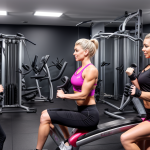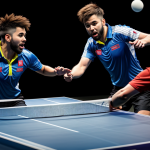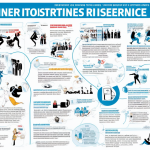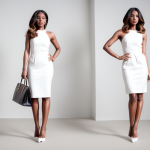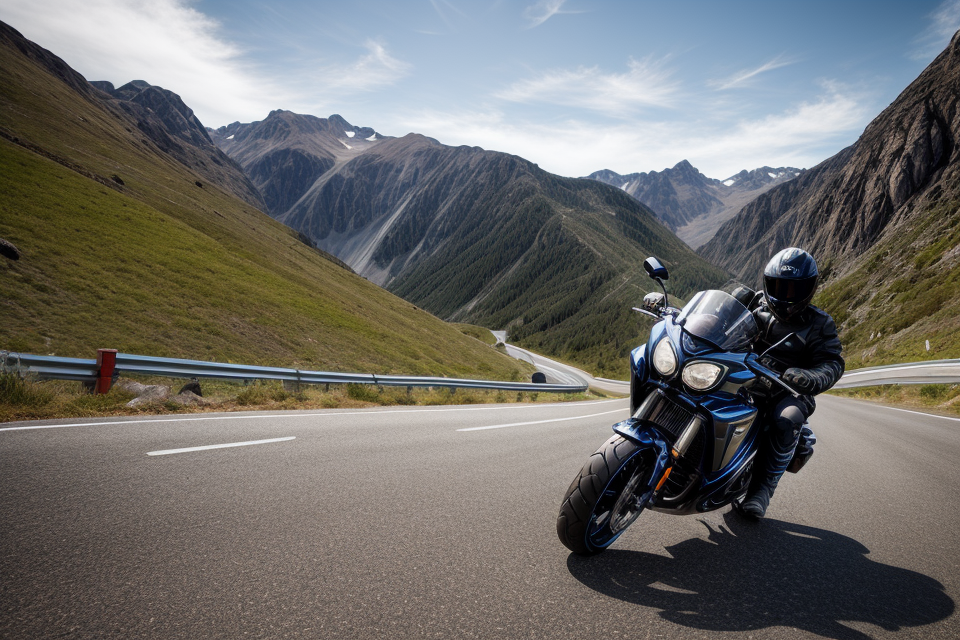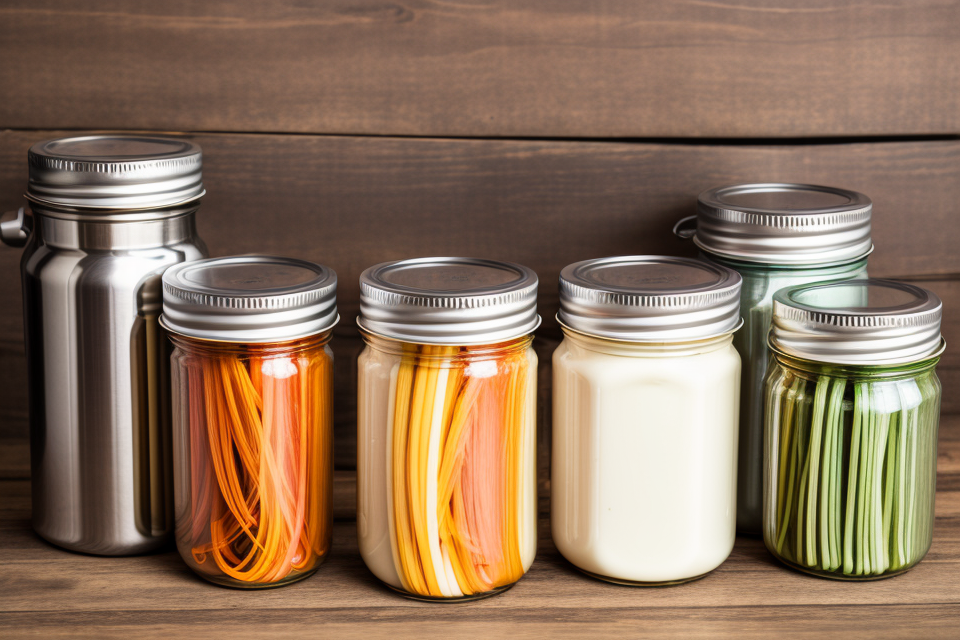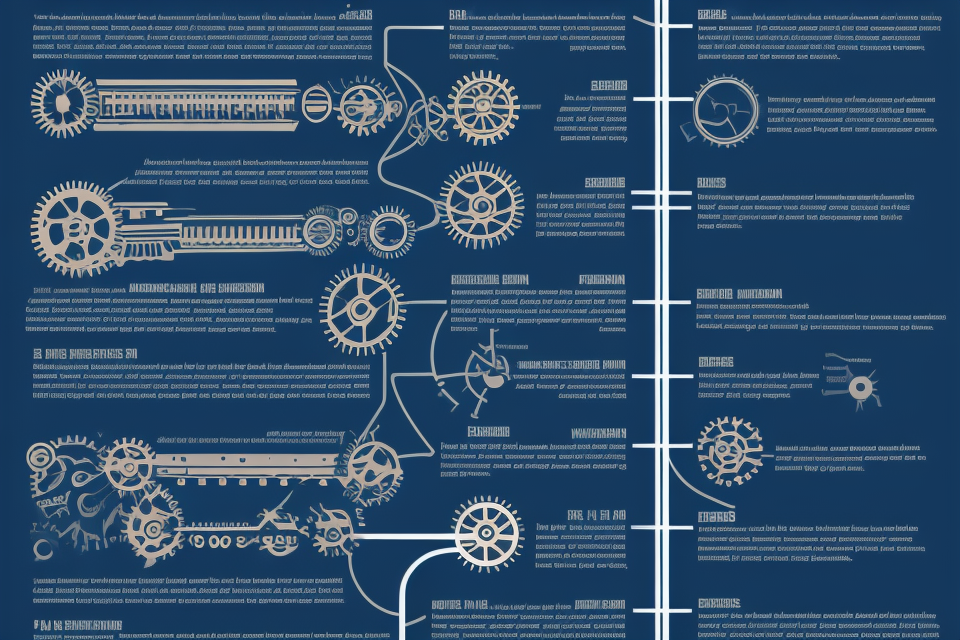Getting started on a motorcycle can be an exciting adventure, but it’s important to remember that safety should always come first. As a beginner, it’s crucial to invest in the right gear to protect yourself from potential accidents and injuries. In this comprehensive guide, we’ll explore the essential protective clothing and accessories every new rider should consider. From helmets to gloves, jackets to boots, we’ll cover everything you need to know to make informed decisions about your motorcycle gear. Whether you’re just starting out or looking to upgrade your current gear, this guide has got you covered. So, let’s get started and ride with confidence!
Understanding the Importance of Motorcycle Gear for Beginners
The Risks of Riding Without Proper Gear
Injuries and fatalities
Riding a motorcycle without proper gear can lead to serious injuries or even fatalities in the event of an accident. This is because the rider’s body will be exposed to the impact of the collision, resulting in bruises, cuts, broken bones, or even head injuries. Without the necessary protective clothing, the rider’s skin will be vulnerable to road rash, a painful and potentially dangerous condition that can cause serious scrapes and burns.
Legal consequences
In addition to the physical risks, riding without proper gear can also lead to legal consequences. Depending on the jurisdiction, motorcyclists may be required to wear certain types of protective clothing, such as helmets, and failure to do so can result in fines or even license suspension. Furthermore, if an accident occurs and the rider is found to be in violation of the local motorcycle gear regulations, they may be held liable for any damages or injuries caused to themselves or others. Therefore, it is essential for beginners to invest in proper motorcycle gear to ensure their safety and compliance with the law.
Benefits of Wearing Motorcycle Gear
- Increased safety and protection: Motorcycle gear plays a crucial role in protecting riders from potential accidents and injuries. It provides an extra layer of safety, which is essential for beginners who may not have the same level of experience and skill as more experienced riders.
- Enhanced comfort and performance: Motorcycle gear is designed to provide maximum comfort and performance. This means that beginners can focus on their riding without having to worry about being uncomfortable or distracted by their clothing.
- Improved rider confidence: Wearing motorcycle gear can boost a rider’s confidence. When a rider feels comfortable and protected, they are more likely to take on new challenges and push themselves to improve their skills. Additionally, wearing gear that is specifically designed for motorcycling can make riders feel more connected to their bikes and the sport itself.
Selecting the Right Motorcycle Gear for Beginners
Key Considerations
When selecting the right motorcycle gear for beginners, it is important to consider several key factors to ensure that the gear is both comfortable and effective in providing protection. Here are some of the most important considerations to keep in mind:
- Riding style and terrain: The type of motorcycle gear you choose will depend on your riding style and the terrain you will be riding on. For example, if you plan to ride off-road, you will need different gear than if you plan to stick to paved roads. Consider the type of motorcycle you will be riding, the speed at which you will be riding, and the type of terrain you will encounter to determine the best gear for your needs.
- Weather conditions: The weather conditions you will be riding in will also play a role in determining the right motorcycle gear for you. If you will be riding in hot weather, you will need gear that is designed to keep you cool and comfortable. On the other hand, if you will be riding in cold weather, you will need gear that is designed to keep you warm and dry.
- Personal preferences and needs: Finally, consider your personal preferences and needs when selecting motorcycle gear. For example, if you have a preference for a certain brand or style, make sure to choose gear that meets your preferences. Additionally, consider any specific needs you may have, such as the need for a larger size or a particular color. By taking these key considerations into account, you can select the right motorcycle gear for your needs and enjoy a safe and comfortable ride.
Essential Gear for Beginner Motorcyclists
As a beginner motorcyclist, it is crucial to have the right gear to ensure your safety on the road. The following are some essential pieces of gear that every beginner motorcyclist should have:
- Helmet: A helmet is the most important piece of gear for any motorcyclist. It is designed to protect the rider’s head in the event of a crash. Look for a helmet that fits well and is comfortable to wear. Full-face helmets offer the most protection, but modular or flip-up helmets can be a good option for those who want more flexibility.
- Jacket or coat: A motorcycle jacket or coat is designed to provide protection to the rider’s torso and back. Look for a jacket that is made of durable materials and has CE armor in the shoulders and elbows. A good quality motorcycle jacket will also have a removable liner for added comfort.
- Gloves: Gloves are an essential piece of gear for motorcyclists. They provide protection to the hands and wrists in the event of a crash. Look for gloves that are made of durable materials and have a good grip on the handlebars. Some gloves also have built-in armor for added protection.
- Pants or chaps: Pants or chaps are designed to protect the rider’s legs and hips in the event of a crash. Look for pants or chaps that are made of durable materials and have CE armor in the knees and hips. Some pants or chaps also have a reinforced seat area for added protection.
- Boots or shoes: Boots or shoes are an essential piece of gear for motorcyclists. They provide protection to the feet and ankles in the event of a crash. Look for boots or shoes that are made of durable materials and have a good grip on the footpegs. Some boots also have built-in armor for added protection.
- Eye protection: Eye protection is essential for motorcyclists. It is designed to protect the rider’s eyes from wind, debris, and other hazards. Look for eye protection that is comfortable to wear and provides good visibility. Some options include glasses, goggles, or a face shield.
- Other accessories (e.g., earplugs, back protector): Other accessories can also be essential for motorcyclists. For example, earplugs can help protect the rider’s hearing from the noise of the engine. A back protector can provide additional protection to the spine in the event of a crash. These accessories are not mandatory but can add an extra layer of protection.
Helmet Selection Guide
Choosing the right helmet is crucial for motorcycle riders, as it provides essential protection for the head and brain in the event of an accident. Here are some key factors to consider when selecting a helmet:
- Choosing the right size and fit: A helmet that is too loose or too tight can reduce its effectiveness in protecting the rider. It is important to select a helmet that fits comfortably and securely, with a snug fit around the crown of the head and a slightly tighter fit at the chin and cheek areas. A good rule of thumb is to try on several different helmets to find the one that feels most comfortable.
- Features to consider: When selecting a helmet, it is important to consider various features that can enhance its effectiveness in protecting the rider. These may include a face shield or visor for eye protection, a comfortable and secure fit, ventilation for airflow, and a noise reduction system to minimize wind noise.
- Types of helmets: There are several types of helmets available, each with its own unique features and benefits. These may include full-face helmets, modular helmets, and flip-up helmets. Full-face helmets provide the most comprehensive protection, covering the entire face and head. Modular helmets are designed to be opened and closed, providing more versatility for riders who may need to take them on and off frequently. Flip-up helmets are similar to modular helmets but are designed to be opened only at the chin area, providing a more compact option for riders who may need to wear their helmets for extended periods of time.
Jacket and Pants Selection Guide
When it comes to selecting the right motorcycle gear, choosing the right jacket and pants is crucial. Not only do they provide protection in the event of a crash, but they also play a significant role in keeping you comfortable and cool while riding. Here are some key factors to consider when selecting your motorcycle jacket and pants:
Materials and Construction
The materials and construction of your motorcycle gear are critical in determining their effectiveness in protecting you. Leather is a popular choice for motorcycle jackets and pants due to its durability and abrasion resistance. However, there are other materials available, such as textiles and carbon fiber, that offer different benefits.
Textiles, for example, are lightweight and breathable, making them ideal for hot weather riding. They are also typically more affordable than leather. Carbon fiber, on the other hand, is extremely lightweight and provides excellent protection against impacts.
Fit and Comfort
It’s essential to choose motorcycle gear that fits you well and is comfortable to wear. A jacket and pants that are too loose can be hazardous in the event of a crash, while those that are too tight can restrict your movement. Look for gear that has adjustable straps and cuffs to ensure a perfect fit.
In addition to fit, comfort is also a critical factor. A jacket and pants that are comfortable to wear will keep you riding for longer periods without feeling fatigued. Look for gear with ergonomic designs that allow for a full range of motion while riding.
Features (e.g., Armor, Waterproofing)
Motorcycle gear can come equipped with a variety of features that can enhance your safety and comfort while riding. Some of the most common features include:
- Armor: Look for gear that includes CE-rated armor in the shoulders, elbows, and back to provide protection in the event of a crash.
- Waterproofing: If you ride in wet weather, consider gear that is waterproof or water-resistant to keep you dry.
- Mesh panels: Some jackets and pants come with mesh panels that allow for better airflow and ventilation, keeping you cool on hot days.
Overall, selecting the right motorcycle jacket and pants requires careful consideration of materials and construction, fit and comfort, and features. By taking the time to research and choose the right gear, you can ensure that you are protected and comfortable while riding.
Glove Selection Guide
When it comes to motorcycle gear, gloves are an essential part of any rider’s ensemble. They not only provide protection for your hands, but they also offer a level of comfort and flexibility that is crucial during long rides. When selecting the right gloves, there are several factors to consider, including fit and flexibility, materials and protection, and features.
Fit and Flexibility
One of the most important aspects of glove selection is finding a pair that fits well. A snug fit is essential for ensuring that your gloves stay in place while you ride, and it also helps to prevent them from bunching up or rubbing against your skin. When trying on gloves, make sure that they fit comfortably around your wrists and that your fingers are able to move freely. Look for gloves with adjustable wrist closures, such as Velcro straps or hook-and-loop fasteners, to help ensure a secure fit.
Flexibility is also an important consideration when selecting gloves. Many gloves are made with materials that allow for a full range of motion, which is especially important for riders who need to operate their motorcycle’s controls while wearing their gloves. Look for gloves with pre-curved fingers and a slim fit at the wrist to promote ease of movement.
Materials and Protection
In addition to fit and flexibility, the materials and protection offered by a pair of gloves are also important factors to consider. Many gloves are made with a combination of textiles and synthetic materials, which provide both flexibility and durability. Look for gloves with reinforced palms and fingertips for added protection against abrasion and impact.
Some gloves also feature additional safety features, such as armor or foam padding in the knuckles and fingers to help absorb impact and reduce the risk of injury. Some gloves also feature reflective materials or piping to help increase visibility in low-light conditions.
Features
Finally, when selecting gloves, consider any additional features that may be important to you. For example, some gloves are designed to be touchscreen compatible, which can be helpful if you need to use your phone or GPS while riding. Other gloves may feature ventilation systems to help keep your hands cool on long rides.
Overall, selecting the right pair of gloves is an important part of ensuring your safety and comfort while riding. Consider your individual needs and preferences when selecting gloves, and be sure to try on several different pairs to find the perfect fit.
Boot and Shoe Selection Guide
When it comes to motorcycle gear, the right footwear is crucial for ensuring both comfort and protection. Here’s a comprehensive guide to selecting the right boots or shoes for your motorcycle journey.
Fit and Support
The fit and support of your footwear are critical when it comes to motorcycle riding. Your feet need to be securely anchored to the pedals, and your boots or shoes should be comfortable enough to wear for extended periods. It’s essential to choose a pair that fits well, with a little room for movement to allow for the fact that your feet will swell during the ride. Look for boots or shoes with a sturdy toe box, good ankle support, and a flexible sole that allows for a natural foot movement.
Materials and Durability
The materials and durability of your footwear are also important factors to consider. Look for boots or shoes made from high-quality materials that are abrasion-resistant, durable, and can withstand the elements. Leather is a popular choice for motorcycle boots due to its durability and resistance to water and oil. Additionally, look for boots or shoes with reinforced stitching, double or triple stitched seams, and other features that ensure long-lasting performance.
Features
There are several features to consider when selecting motorcycle boots or shoes. For example, look for boots or shoes with good grip on the pedals, which is especially important during stops and starts. Additionally, waterproofing is a valuable feature, especially if you ride in wet weather. Ankle protection is also important, and you should look for boots or shoes with reinforced ankle cuffs to protect your ankles from impacts. Finally, some boots or shoes come with additional features such as adjustable fit systems, replaceable soles, and reflective details for improved visibility in low-light conditions.
Motorcycle Apparel Brands for Beginners
Recommended Brands
When it comes to motorcycle gear, there are several brands that are well-known for their quality and performance. As a beginner, it can be overwhelming to navigate through the different options available. To help you get started, here are some recommended brands for essential motorcycle apparel:
Helmets
- AGV: Italian brand known for its high-quality helmets that offer excellent protection and comfort.
- Shoei: Japanese brand that produces top-of-the-line helmets with innovative features and stylish designs.
- Bell: American brand that has been around for over 60 years, offering a wide range of helmets for different types of riders.
Jackets and pants
- Icon: US-based brand that offers a range of motorcycle apparel, including jackets and pants, with a focus on style and protection.
- Alpinestars: Italian brand that is known for its high-performance gear, including jackets and pants that offer excellent protection for riders.
- Tourmaster: US-based brand that offers a range of motorcycle apparel, including jackets and pants, with a focus on durability and comfort.
Gloves
- Rev’It: Dutch brand that offers a range of motorcycle apparel, including gloves, with a focus on style and protection.
- Riding Gloves: US-based brand that offers a range of motorcycle gloves, including those with protective features for the fingers and knuckles.
- Grip Pups: Brand that specializes in motorcycle gloves with innovative features, such as touchscreen compatibility and adjustable wrist support.
Boots and shoes
- Dainese: Italian brand that offers a range of motorcycle apparel, including boots and shoes, with a focus on protection and performance.
- TCX: Italian brand that produces high-quality boots and shoes for motorcycle riders, with a focus on comfort and style.
- SIDI: Italian brand that offers a range of motorcycle boots and shoes, including those with innovative features such as adjustable fit systems.
How to Choose the Right Size and Fit
Choosing the right size and fit of motorcycle gear is crucial for both safety and comfort. Here are some tips to help you find the perfect fit:
Measuring and Fitting Tips
Before purchasing any motorcycle gear, it’s important to take accurate measurements of your body. Here are some key areas to measure:
- Chest circumference
- Waist circumference
- Hip circumference
- Inseam length
- Height
Make sure to measure yourself in the same place each time and use a flexible tape measure for accurate results. It’s also important to keep in mind that your body may change throughout the day, so take measurements at the end of the day when you’re most relaxed.
Considerations for Different Types of Gear
Different types of motorcycle gear may require different measurements and considerations. For example:
- Jackets and pants may require a different fit than gloves and boots.
- Full-face helmets may require a different size than half-face helmets.
- Leather gear may require a break-in period to achieve the perfect fit.
It’s important to take the time to try on different types of gear to ensure a proper fit. Make sure to ask for assistance from a salesperson if needed.
Additionally, consider the type of riding you’ll be doing when choosing your gear. For example, if you plan on doing a lot of off-road riding, you may need more protective gear that fits more loosely to allow for more movement. On the other hand, if you plan on doing a lot of highway riding, you may prefer a more form-fitting gear to reduce wind resistance.
Overall, taking the time to properly measure and fit your motorcycle gear is crucial for both safety and comfort. Make sure to consider the different types of gear and your specific riding needs when making your selection.
Tips for Staying Safe and Comfortable on Your Motorcycle
Pre-Ride Preparation
Inspecting your gear
Before you hit the road, it’s crucial to inspect your motorcycle gear for any signs of wear or damage. Check your helmet for cracks or dents, and ensure that your visor is free from scratches. Inspect your jacket and pants for any tears or fraying, and make sure that your gloves are in good condition. If you notice any damage, replace the affected gear immediately.
Adjusting your riding position
Proper riding position is essential for safety and comfort on your motorcycle. Adjust your seat height to ensure that your feet are flat on the ground when you come to a stop. Check that your handlebars are at the correct height, and adjust them if necessary. Ensure that your knees are slightly bent when you’re seated on the bike, and that your back is straight. Proper riding position can help you control your motorcycle more effectively and reduce the risk of accidents.
During Your Ride
Maintaining Visibility and Visibility
- Wear bright or reflective clothing to increase visibility to other motorists
- Use lights on your motorcycle to improve visibility during nighttime rides
- Keep your motorcycle clean and well-maintained to ensure maximum visibility
Communicating with Other Riders
- Use hand signals to communicate with other riders, especially when driving in groups
- Use a communication system, such as a Bluetooth headset, to communicate with your passenger or other riders in your group
- Be aware of other riders’ surroundings and adjust your riding behavior accordingly
Adapting to Changing Weather and Road Conditions
- Check the weather forecast before your ride and adjust your gear and riding behavior accordingly
- Use appropriate tires for the road conditions, such as rain tires for wet roads or off-road tires for dirt roads
- Adjust your speed and riding position to match the road conditions, such as slowing down on slippery roads or taking a more upright position on off-road terrain
In addition to these tips, it’s important to always wear appropriate protective gear, such as a helmet, gloves, and protective clothing, to stay safe on your motorcycle.
Post-Ride Maintenance
Cleaning and Caring for Your Gear
After every ride, it’s important to clean and care for your motorcycle gear to maintain its integrity and extend its lifespan. Depending on the type of gear and the level of soiling, there are various methods for cleaning your gear. Here are some tips:
- Leather gear: For leather gear, use a soft brush or cloth to remove any loose dirt or debris. Avoid using soap or detergent, as these can damage the leather. Instead, use a leather conditioner to restore moisture and protect the leather.
- Textile gear: For textile gear, wash it in cold water and mild detergent. Avoid using bleach or fabric softener, as these can weaken the fibers and reduce the effectiveness of the gear. Allow the gear to air dry, as using a dryer can cause shrinkage and damage.
Checking for Wear and Tear
It’s important to regularly inspect your gear for any signs of wear and tear, as this can compromise its effectiveness and increase the risk of injury. Here are some things to look out for:
- Leather gear: Check for any cracks, fraying, or discoloration. If you notice any of these signs, it’s time to replace the gear.
- Textile gear: Check for any tears, punctures, or fraying. If you notice any of these signs, it’s time to replace the gear.
Storing Your Gear Properly
Proper storage of your motorcycle gear can help to extend its lifespan and prevent damage. Here are some tips:
- Store your gear in a cool, dry place. Avoid storing your gear in direct sunlight or in damp areas, as this can cause damage to the materials.
- Hang your gear up, rather than folding or stacking it. This can help to prevent creases and wrinkles, which can reduce the effectiveness of the gear.
- Use a gear bag or storage box to keep your gear organized and protected. This can help to prevent damage and make it easier to find the gear you need when you’re ready to ride.
FAQs
1. What is the most important motorcycle gear for beginners?
The most important motorcycle gear for beginners is a helmet, as it provides the most protection for your head in the event of a crash. Other essential gear includes gloves, jacket, pants, and boots.
2. How do I choose the right size of motorcycle gear?
When choosing motorcycle gear, it’s important to select the right size to ensure a comfortable and proper fit. Measure your body to determine your size, and consider getting gear that is adjustable to allow for growth or changes in body shape.
3. How much motorcycle gear do I need as a beginner?
As a beginner, you should invest in a helmet, gloves, jacket, pants, and boots. These are the essential pieces of gear that will provide the most protection in the event of a crash.
4. Can I wear regular clothes for motorcycle riding?
Wearing regular clothes for motorcycle riding is not recommended, as they will not provide the necessary protection in the event of a crash. Motorcycle gear is specifically designed to protect your body from injury.
5. How much should I expect to spend on motorcycle gear as a beginner?
The cost of motorcycle gear can vary depending on the quality and brand of the gear. As a beginner, you can expect to spend around $500-$1000 on essential gear such as a helmet, gloves, jacket, pants, and boots.
6. Are there any motorcycle gear that is mandatory to wear?
In most states, helmets are mandatory for motorcycle riders. However, it’s always a good idea to wear other protective gear such as gloves, jacket, pants, and boots to ensure your safety in the event of a crash.
7. Can I wear jeans as motorcycle pants?
Jeans can be worn as motorcycle pants, but they are not the most protective option. Motorcycle pants are specifically designed to protect your legs in the event of a crash, and are made of materials that are abrasion-resistant and flexible.
8. How do I care for my motorcycle gear?
To maintain the quality and longevity of your motorcycle gear, it’s important to follow the manufacturer’s instructions for care and maintenance. This may include washing and drying the gear properly, and storing it in a cool, dry place when not in use.


